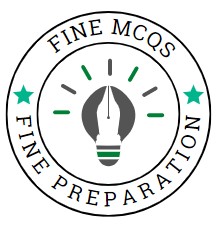11. During a solar eclipse, which of the following represents the relative position of the Sun, Moon, and Earth correctly?
(a) The Sun in between the Earth and the Moon
(b) The Earth in between the Sun and the Moon
(c) The Moon in between the Sun and the Earth
(d) The Sun, Moon, and Earth are not in a straight line
12. The distance of the planets from the sun in the increasing order is.
(a) Mercury, Venus, Earth, Mars
(b) Venus, Earth, Mars, Mercury
(c) Earth, Mars, Mercury, Venus
(d) Mercury, Venus, Mars, Earth
13. The earth is the third nearest planet to the sun located between the planets.
(a) Mars and Jupiter
(b) Venus and Mars
(c) Mercury and Venus
(d) Jupiter and Saturn
14. The planet, which is not only the smallest but also nearest to the sun, is.
(a) Jupiter
(b) Mercury
(c) Mars
(d) Venus
15. Which of the following spacecraft enabled man to step on the moon first?
(a) Sputnik I
(b) Luna II
(c) Voshod I
(d) Apollo XI
16. Which of the following planets is farthest from the sun according to new scientific research?
(a) Mercury
(b) Mars
(c) Neptune
(d) Uranus
17. Name two planets which appear as ‘morning star (in the eastern sky and evening star’ in the western sky.
(a) Mars and Venus
(b) Jupiter and Mars
(c) Saturn and Uranus
(d) Mercury and Venus
18. Which of the following planets takes the least time to complete one revolution around the sun?
(a) Earth
(b) Mercury
(c) Mars
(d) Venus
19. Which of the following planets takes the longest time to complete one revolution around the sun?
(a) Neptune
(b) Saturn
(c) Uranus
(d) Venus
20. The sun consists mostly of–.
(a) Helium
(b) Hydrogen
(c) Nitrogen
(d) Oxygen

